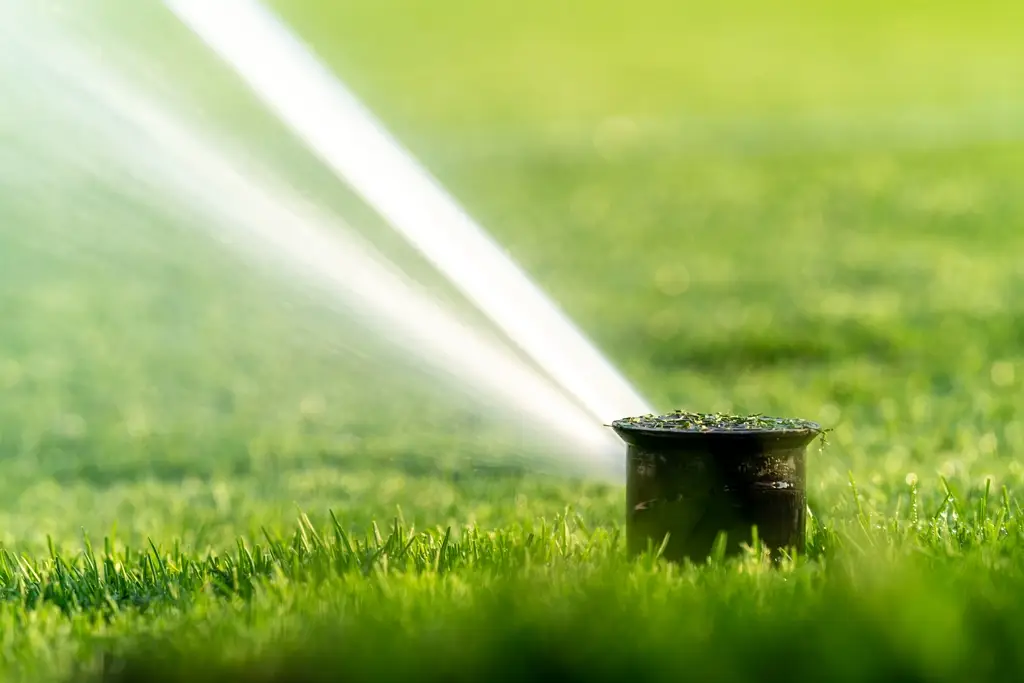Watering is a must when it comes to maintaining a healthy lawn, but it isn’t as straightforward as one might expect. Factors such as environmental conditions and scheduling amongst others, need to be taken into account. In this blog post, Lawn Master lays out some of the basics and provide tips on how to keep your lawn well-hydrated throughout the year.
When to Water
The time of day you choose to water your grass makes a big difference in how to keep your lawn well-hydrated.
- The ideal time is before 10am. This is because the temperature is lower, which prevents rapid evaporation. Doing this will also help conserve water during the summer since it isn’t immediately evaporated.
- Try to avoid watering at night time. Although it seems logical given the lower temperatures, the lawn remaining moist for too long increases the possibility of disease. Somewhere between sunrise and 10 am works best.
- In cold winter climates like in Idaho, we recommend no longer watering after the first deep freeze, which typically happens in mid-October or early November. Make sure to water normally until that point so the grass has its best chance at surviving the winter months.
How much to water
Lawn care experts say that too much water can lead to just as many problems as too little. Here are additional tips on how to keep your lawn well-hydrated:
- For strong, healthy roots to develop, the aim should be to wet the soil up to 6 to 8 inches deep. This takes approximately 1 to 1.5 inches of water to achieve and is usually broken up into one or two watering sessions per week (this includes any rainfall).
- Watering the lawn too often can oversaturate the soil and increase the risk of diseases. Fungi thrive in waterlogged soil and are a good indicator of over-watering. Don’t forget to calculate rainfall into the weekly 1.5 inches.
- Watering too lightly will cause weak, shallow roots. That’s why it’s so important to penetrate deeper with longer duration once or twice a week watering sessions. This encourages the roots to grow deeper into the soil and increases the odds of surviving droughts.
A simple way to make sure you’re watering the correct amount is to put empty cans in areas where the sprinklers target. Time how long it takes the cans to fill up 1 to 1.5 inches, and use that to determine how long to keep your irrigation system running.
Watering during droughts
Another consideration on how to keep your lawn well-hydrated is to check on temperature. Extreme heat and a lack of moisture add a whole new challenge to keeping grass alive, and unfortunately, drought is becoming more and more common nowadays.
- With water in short supply and local conservation efforts in place, it’s important to make the most of the limited water available. Deeper, less frequent irrigation will keep roots strong and hardy throughout the drought.
- The deeper the roots, the more efficient they are at pulling water from the soil. Schedule watering times around sunrise when the sun and temperature is low, to reduce evaporation and offer plenty of time for absorption.
- Grass will go dormant in extended droughts in order to conserve moisture and nutrients. During periods of dormancy, the grass only needs around half an inch of water every two weeks. More than that could bring the grass out of dormancy too early and wastewater.
Grass is generally very resilient and with careful attention can survive extended periods of drought. Most types will recover nicely following a decent rainfall or two.
How to water newly planted areas
Newly seeded grass is a lot needier than mature grass and requires much more care in the beginning stages. Depending on the grass type, it can take anywhere from 5 to 30 days for the seeds to fully germinate. Here are additional tips on how to keep your lawn well-hydrated:
- For the first few weeks, it’s recommended to water seeds twice a day, once in the morning and once in the evening. It’s only necessary to moisten the top inch or two of soil, so two 10-minute sessions are usually fine. As the grass grows, you can reduce this amount.
- Newly sprouted grass is very delicate in the beginning stages, so be careful to maintain a regular schedule and not skip any days. Even a single day of no water is enough to kill it in the beginning. Covering the seeds with a light layer of mulch will help retain moisture.
- Once the grass has germinated and the blades are around 1 inch tall, twice-daily watering can be discontinued. This can take up to a month in some cases, but on average lasts around two weeks. From here, water the grass the same as you would mature grass.
Do you have additional questions on how to keep your lawn well-hydrated? Contact Lawn Master at (208) 989-9261 and we’ll have one of our qualified specialists over to evaluate the situation right away.



